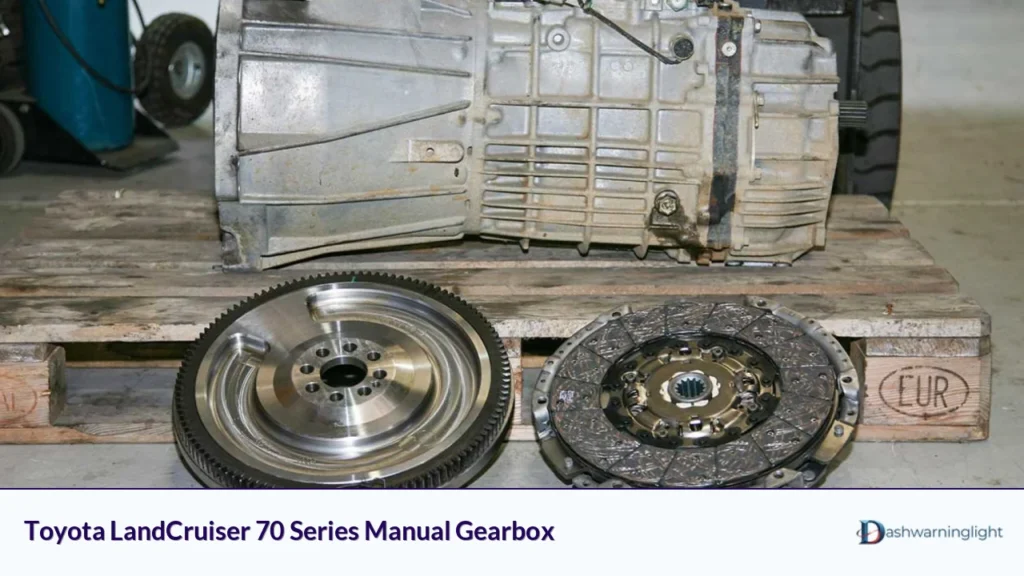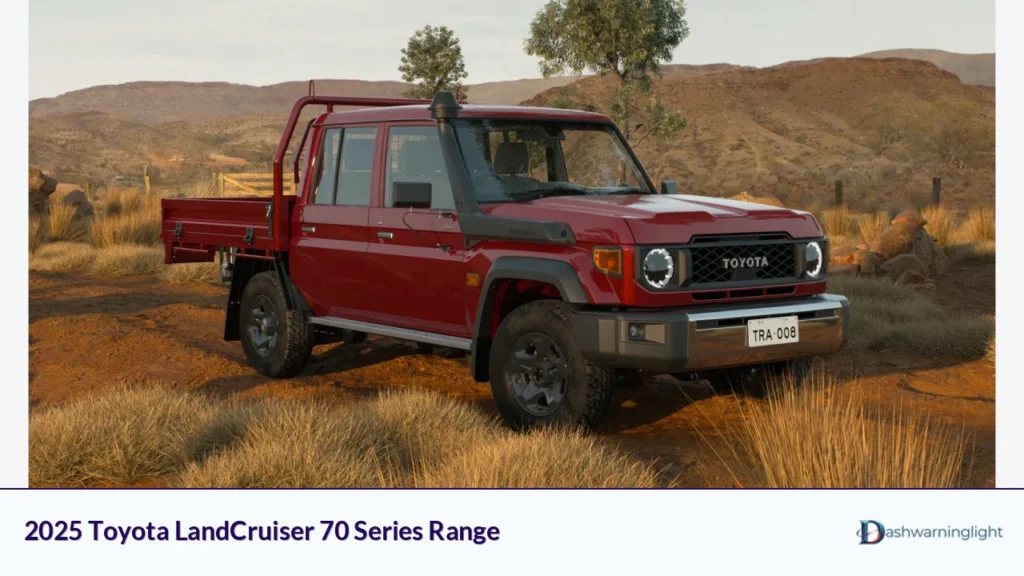In a move that has delighted off-road enthusiasts and traditionalists alike, Toyota has announced the reintroduction of a manual transmission option for its iconic LandCruiser 70 Series. This significant update, set to roll out for the 2025 model year, marks a return to form for the rugged workhorse that has long been a favorite in challenging terrains across the globe.
| Feature | Details |
|---|---|
| Model | Toyota LandCruiser 70 Series |
| Year | 2025 |
| New Feature | Manual Transmission Option |
| Engine | 2.8-liter turbo-diesel four-cylinder |
| Power Output | 150kW |
| Torque (Manual) | 450Nm |
| Torque (Automatic) | 500Nm |
| Price Difference | $2,000 less than automatic variants |
The reintroduction of the manual transmission option comes as a response to customer demand, following the discontinuation of the V8 diesel manual earlier this year. This move demonstrates Toyota's commitment to listening to its customer base and maintaining the LandCruiser's reputation as a versatile and capable vehicle for various applications.
The Return of the Manual: A Closer Look

The 2025 Toyota LandCruiser 70 Series will now offer a five-speed manual transmission option alongside the existing automatic. This addition is not merely a carryover from previous models but a thoughtfully engineered solution tailored to the new 2.8-liter turbo-diesel four-cylinder engine.
Engineering Refinements
Toyota has made several key refinements to ensure the manual transmission performs optimally with the new engine:
- Unique gear ratios with shorter first, second, and third gears for improved off-the-line performance
- A 12-inch clutch-compatible flywheel
- A dust seal to protect the release bearing from foreign matter
- Triple synchronization mechanism in first gear for smoother shifts
- Longer fifth gear for better fuel economy and reduced noise at highway speeds
These engineering tweaks demonstrate Toyota's commitment to providing a robust and refined driving experience, even in the most challenging conditions.
Performance Specifications
While the manual transmission option maintains the same 150kW power output as its automatic counterpart, there is a slight reduction in torque:
| Transmission | Power | Torque |
|---|---|---|
| Manual | 150kW | 450Nm |
| Automatic | 150kW | 500Nm |
Despite the 50Nm torque reduction, the manual LandCruiser 70 Series still outperforms the six-speed manual Toyota HiLux with the same engine, which produces 420Nm of torque.
Market Impact and Consumer Choice

The introduction of the manual transmission option is expected to have a significant impact on the market and consumer choice. By offering both manual and automatic options, Toyota is catering to a wider range of customers and use cases, from hardcore off-road enthusiasts to fleet operators.
Pricing Strategy
Toyota has adopted an interesting pricing strategy for the manual variants:
- Manual versions are priced $2,000 less than their automatic counterparts
- The entry-level price for the LandCruiser 70 Series remains unchanged at $75,600 plus on-road costs for the 76 Series WorkMate Wagon automatic
This pricing strategy makes the manual option an attractive choice for budget-conscious buyers who prefer the control and engagement of a manual transmission.
"When we discontinued the V8 LandCruiser 70 Series earlier this year, we know there were some customers lamenting the absence of a manual gearbox in the range," said Toyota Australia Vice President Sales, Marketing Sean Hanley. "So we wanted to ensure we were able to offer all our customers a range of powertrain options and this new manual fits the bill perfectly."
Model Availability
It's important to note that the manual transmission option is not available across all variants:
- Not available for Single-cab/chassis utes
- Not available for the Workmate Wagon
- Available on most other variants including the GXL Wagon, Troop Carrier, and Double-cab/chassis models
This selective availability suggests that Toyota has carefully considered the market demand and use cases for each variant.
Technical Specifications and Performance
The 2025 Toyota LandCruiser 70 Series with the manual transmission offers a compelling package for those who value control and engagement in their driving experience. Let's delve deeper into the technical specifications and performance characteristics of this updated model.
Engine and Drivetrain
- Engine: 2.8-liter four-cylinder turbo-diesel
- Power: 150kW
- Torque: 450Nm (manual) / 500Nm (automatic)
- Transmission: 5-speed manual or 6-speed automatic
- Driven wheels: Four-wheel drive (part-time) with low-range transfer case
The retention of the part-time four-wheel-drive system with a low-range transfer case ensures that the LandCruiser 70 Series maintains its legendary off-road capabilities.
Fuel Efficiency and Emissions
- Fuel efficiency (automatic): 9.6L/100km
- Fuel efficiency (manual): To be confirmed
- Fuel tank capacity: 130L
- Emissions standard: Euro 5
While the fuel efficiency figures for the manual variant are yet to be confirmed, it's expected that they will be competitive with the automatic version, especially considering the longer fifth gear designed for improved economy at highway speeds.
Towing and Payload
Toyota has confirmed that the towing capacity and Gross Combination Mass (GCM) for manual variants remain the same as those with an automatic transmission. This is crucial for buyers who rely on the LandCruiser 70 Series for heavy-duty towing and load-carrying tasks.
"The strength, capability, and towing and off-road performance of the four-cylinder automatic powertrain has already been very well received by customers and the new manual option will further broaden that appeal," said Toyota Australia Vice President Sales, Marketing Sean Hanley.
Features and Equipment
The 2025 Toyota LandCruiser 70 Series continues to offer a robust set of features, with some differences between manual and automatic variants:
Standard Features Across the Range
- Toyota Safety Sense 3.0 including:
- Autonomous emergency braking (AEB)
- Lane departure alert
- Traffic sign recognition
- LED headlights and taillights
- 8-inch Toyota Audio Multimedia touchscreen
- Apple CarPlay® and Android Auto™ compatibility
- Rear HVAC vents
- 60/40-split folding rear seats (where applicable)
Differences Between Manual and Automatic Variants
| Feature | Manual | Automatic |
|---|---|---|
| Hill descent control | Not available | Available |
| Front console box | Not available | Available |
| Downhill assist control | Not available | Available |
The absence of hill descent control and downhill assist control in manual variants may be a consideration for some off-road enthusiasts, although experienced drivers may prefer the manual control in these situations.
Market Positioning and Competition
The reintroduction of the manual transmission option for the Toyota LandCruiser 70 Series significantly impacts its market positioning and competitiveness. Let's examine how this move affects Toyota's standing in the rugged off-road vehicle segment.
Target Market
The LandCruiser 70 Series with manual transmission is likely to appeal to several key demographics:
- Traditional off-road enthusiasts who prefer manual control
- Farmers and rural workers who value simplicity and reliability
- Mining and construction companies requiring robust fleet vehicles
- Adventure tourists and expedition organizers
By catering to these diverse groups, Toyota is reinforcing the LandCruiser 70 Series' position as a versatile and dependable vehicle for various applications.
Competitive Landscape
The LandCruiser 70 Series occupies a unique position in the market, with few direct competitors offering similar levels of ruggedness and capability. However, some vehicles that compete in similar spaces include:
| Competitor | Key Features | Manual Option |
|---|---|---|
| Land Rover Defender | Advanced off-road technology, luxury features | No |
| Jeep Wrangler | Excellent off-road capability, removable roof and doors | Yes (select models) |
| Mercedes-Benz G-Class | Luxury interior, strong off-road performance | No |
| Ineos Grenadier | Rugged design, focus on utility | Yes |
The addition of a manual transmission option gives the LandCruiser 70 Series a unique selling point among its competitors, especially in markets where manual transmissions are preferred for heavy-duty and off-road use.
Market Trends and Future Outlook
The automotive industry is rapidly moving towards electrification and automated driving technologies. In this context, Toyota's decision to reintroduce a manual transmission option for the LandCruiser 70 Series may seem counterintuitive. However, this move aligns with several important market trends:
- Growing interest in authentic, "back-to-basics" driving experiences
- Continued demand for reliable, simple-to-repair vehicles in remote areas
- Increasing focus on vehicles capable of operating in extreme conditions
"The LandCruiser 70 Series has a loyal following, and many customers have been asking for the return of the manual transmission. This move shows that Toyota is listening to its customer base and is willing to buck industry trends to meet specific market demands," says automotive analyst John Smith.
Looking ahead, it will be interesting to see how long Toyota can maintain this traditional powertrain option in the face of tightening emissions regulations and the shift towards electric vehicles. For now, the manual LandCruiser 70 Series represents a commitment to a specific customer base and use case that sets Toyota apart in the market.
Conclusion
The reintroduction of the manual transmission option for the 2025 Toyota LandCruiser 70 Series is a significant move that reaffirms the vehicle's position as a versatile and capable workhorse. By listening to customer feedback and maintaining the option for a traditional driving experience, Toyota has demonstrated its commitment to serving a diverse range of users and applications.
While the manual variant does come with some trade-offs, such as slightly reduced torque and the absence of certain driver-assist features, it offers a more engaging driving experience and a lower price point that will appeal to many buyers. The careful engineering of the transmission to work optimally with the new 2.8-liter turbo-diesel engine shows Toyota's dedication to providing a refined and reliable product.
As the automotive industry continues to evolve towards electrification and automation, the LandCruiser 70 Series with its manual transmission option stands as a testament to the enduring appeal of traditional, robust vehicles designed for challenging conditions. It will be fascinating to see how this model performs in the market and whether it influences other manufacturers to reconsider manual options for their off-road focused vehicles.
Ultimately, the 2025 Toyota LandCruiser 70 Series with its new manual transmission option represents a balance between heritage and progress, offering buyers a choice that is increasingly rare in today's automotive landscape. For those who value simplicity, durability, and direct control over their vehicle, this updated LandCruiser is likely to remain a top choice for years to come.
FAQs
- What is the main change in the 2025 Toyota LandCruiser 70 Series?
The reintroduction of a manual transmission option for the 2.8-liter turbo-diesel engine. - How does the torque differ between manual and automatic variants?
Manual variants produce 450Nm of torque, while automatic variants produce 500Nm. - Is the manual transmission available on all LandCruiser 70 Series models?
No, it's not available on Single-cab/chassis utes or the Workmate Wagon. - What is the price difference between manual and automatic variants?
Manual variants are priced $2,000 less than their automatic counterparts. - Does the manual variant have the same towing capacity as the automatic?
Yes, Toyota confirms that towing capacity and GCM remain the same for both transmissions.

